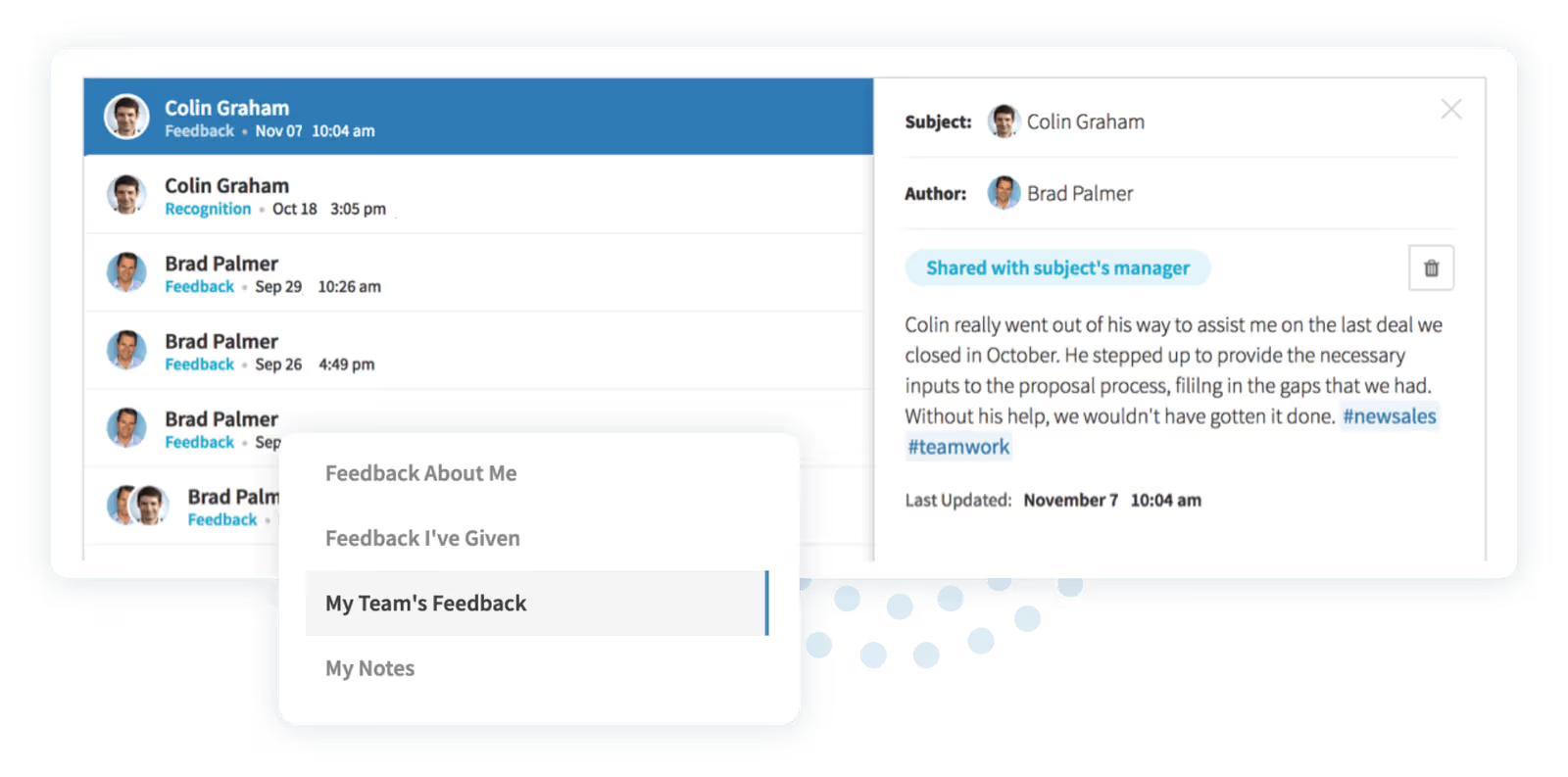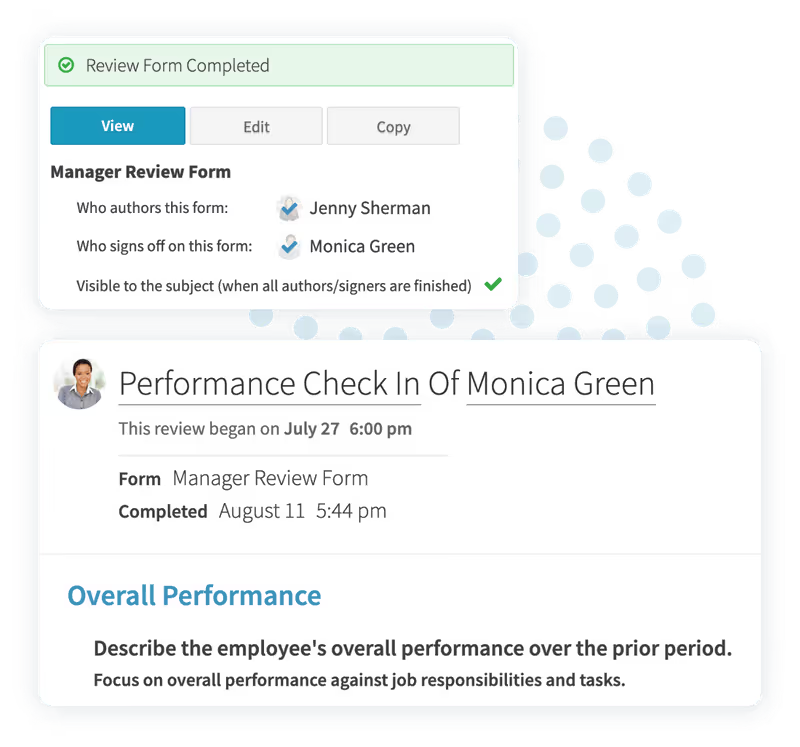HR Lessons from the Adobe Performance Management Overhaul
Adobe is one of the world's best workplaces, and employees agree, with 89% saying it's a great place to work. Plus, 86% of employees feel that they receive fair pay for the work they do.
Employees feel that Adobe is such a great place to work in part because HR understands the organization can always do better. Adobe’s performance management process serves employees, management, and the whole organization.
In 2012 that meant scrapping the annual review cycle that had been a staple in their review process and adopting a system of Check-ins instead.
Here’s how Adobe tackled the mammoth task of adjusting its review process for thousands of employees. We’ll start with why Adobe felt the need to adjust its performance management process in the first place.
Why Did Adobe Need a New Performance Management System?
Adobe spent many years utilizing an annual review cycle, like most other businesses around 2010. At that time, many of the world’s top businesses realized that annual reviews aren’t effective. Microsoft performance management and Accenture performance management have changed along with Adobe.
In 2012, the company was facing a major change. They were approaching the end of an era. The company was transitioning into a cloud-based software company. They would be focusing on releasing updates and innovations much more often.
Even without the change, it was clear that the current process was not working. The annual review cycle took up a total of 80,000 working hours. That’s equal to 40 full-time employees. Not to mention the time and annoyance employees experienced at having to respond to 10 or more individual requests for feedback. Some left feeling surprised and confused by critical feedback they weren't expecting.
Donna Morris was the Senior Vice President for Customer and Employee Experience at the time. She decided the company needed a more agile review process. Abolishing the annual review would allow teams to make adjustments without waiting for feedback that was still months away. It would also allow Adobe to recognize outstanding employee performance.
When Did Adobe Change Its Performance Management System?
It was obvious to Donna Morris in March of 2012 that the annual review system wasn’t working. Before she could share her thoughts with the CEO and executive team, she attended a press conference in India. There, she shared her opinion that annual performance reviews were outdated and unproductive. That left eight days before the story was published for her to start redefining Adobe's performance management process.
During those short eight days, Donna published a company blog addressing the problems with the annual review and invited feedback from employees. Hundreds shared their thoughts and support for a change to the review process.
Donna Morris was able to create a system of Check-ins that was rolled out to all employees within nine short months.
What Is Adobe’s New Performance Management System?
Adobe's old performance management system was an extremely labor- and resource-intensive process. It forced employees to provide feedback about several people. Managers wrote a performance summary of each employee as well.
In contrast, the new system is more fluid. It supports two-way dialog between managers and employees. Both parties have a say in the process.
Adobe’s HR team is called the People Resources team. This team has shifted away from conducting the process. Now, the focus on employee and manager enablement. They encourage everyone to learn and practice both giving and receiving feedback instead.

A dedicated section of Adobe's intranet serves as a bank of information that contains templates for goal-setting and planning feedback conversations. Both videos and tips can be accessed that help employees and managers make the most of the new process.
An Employee Resources Center (ERC) was also designed to provide employees with a way to ask questions about a specific Check-in or the process in general. That way, employees have a place they can go with their concerns and receive advice instead of bottling it up, which can affect their performance, attitude, and the wider company culture.
A robust training program is also in place to teach managers and non-managers how to provide constructive feedback.
Raises and bonuses are no longer tied to a single annual review. Instead, discussions happen at Rewards Check-ins that are informed by previous Check-ins. This gets rid of surprises and ensures everyone is compensated based on an accurate assessment of their performance.
What Is Adobe’s Check-in System?
The new Adobe performance management process has been named the "Check-in". All employees worldwide get to enjoy the new process.
It starts with managers outlining expectations at the start of the year. Annual reviews would only revisit those expectations at the end of the review cycle. Check-ins ensure they are revisited regularly. Quarterly meetings are recommended, but employees can schedule more. No specific format needed. Employees and managers can decide if they want to use goal-setting forms. They can also decide and how and when to meet according to what works best for them.
Employees get feedback on an ongoing basis and focuses on performance. The feedback also happens in real-time. Managers can reinforce good behaviors and correct wrong behaviors without having to wait months, which is a common issues with annual review cycles.
There are no ratings, rankings, or prescribed raises or rewards. Salary raises and equity grants still happen each year, but leaders can adjust awards based on their best judgment.

Most surprising is the fact that there are no longer any mandates around timing or methods. Written reviews are no longer a requirement either. Employees don’t have to fill out several forms and conduct reviews according to a pre-set process. Now, teams can create a process that works for them.
What Are the Results of Adobe’s New Performance Management System?
Adobe has experienced a lot of success since implementing the Check-in system. As the company has grown, the number of hours everyone spends on performance management has decreased. A 2016 estimate showed that the company saves more than 100,000 manager hours every year.
It has supported Adobe in its quest to increase its employer brand. Three-quarters of employees leaving the company state that they would recommend Adobe as a great place to work. This is an increase over previous years. Its global reputation has increased as well. It has risen 47 spots since 2016 on the Interbrand Top Global Brands ranking.
Adobe has experienced a small increase in turnover, but they see this as a win. Ongoing conversations about performance allow managers to identify and shed underperformers. Some employees even choose to leave on their own after open discussions with their managers. This helps Adobe build a culture of high performance.
How is Adobe updating performance reviews to better match remote teams? Check-ins happen over the phone or via video conference when a face-to-face meeting isn't possible. This ensures the process benefits remote employees.
Most telling is the fact that Adobe implemented the new performance management system in 2012 and they’re still using it over a decade later.
Key Takeaways for HR Leaders
Use this Adobe performance management case study to build a more effective process.
Adobe’s process is flexible. It enables managers and employees to schedule and meet when it’s convenient for them. There is no set agenda for how the Check-in should go. With no paperwork, the process is also simple and easy.
Check-ins don’t include extensive paperwork and they don’t have to follow a specific format. As a result, employees and managers can engage in more frequent communication about goals and performance.
PerformYard software ensures your team can conduct check-in-style reviews at your pace. The software also allows you to increase your reporting capabilities.

You can document meetings with goals and performance data logged in the system. That means HR, management, and employees can make real-time improvements.
FAQs
Is Adobe a high performance organization?
Adobe is a high performance organization. It is one of the world's best workplaces. Interbrand lists Adobe as one of the best global brands. Exiting workers rate the company as a workplace they would recommend to others.
Does adobe do performance reviews?
Adobe does performance reviews, but they conduct a system of Check-ins that take place throughout the year. Managers and employees choose when to talk about whatever they think is important. They don’t have to adhere to a strict process or fill out extensive paperwork.
Why did Adobe abolish the annual performance review?
Adobe got rid of the annual performance review because it was costing managers over 80,000 working hours. They needed a more agile process as they became a cloud-based software company.

.jpg)

.jpg)
